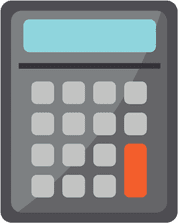In this video, I want to talk about 8 steps a newbie investor can take in the next three to six months to get started with apartment building investing.
While the task can seem overwhelming, there are some well-defined and easy-to-do things you start doing today. Do a little bit each day, and after a while, you’ll be amazed at what you’ve accomplished!
Step # 1: Read Free Stuff
I have a ton of free stuff for you which will keep you busy for weeks. Check out www.TheMichaelBlank.com/resources.
Step # 2: Buy A Book
Go to Amazon and Google “apartment building investing” or something similar. There are several good books on the subject that will give you a good overview of what apartment building investing entails.
Step # 3: Network With Other Investors
Attend your local Real Estate Investor Club meeting. Soak it all in, and after a few visits, you’ll figure out who the commercial real estate investors are. Take them out to lunch and pick their brain.
Step # 4: Attend A Seminar
Once you’ve made up your mind that you want to get into apartment building investing, it may be time for you to invest in a seminar or course. A good seminar (even one that may be more expensive) will help you avoid some of the more basic and major mistakes and will speed up the learning curve.
Step # 5: Create A Sample Deal Package
Search for deals on loopnet.com and request the marketing package for one of the deals. Create a Deal Package with information about the property, photos, your business plan, actual financials, and projected financials and returns. This is useful in several ways: (1) it helps make the whole thing more real to you and (2) you can use it when speaking to potential investors, brokers, and lenders to give you credibility.
Step # 6: Practice Analyzing Deals!
Buy or create a deal analyzer spreadsheet to answer the question “what is the most I can pay for this deal?” The more you analyze, the more confident you’ll get.
Step # 7: Tour a Property
Call a broker, request the marketing package, analyze the deal, and arrange a visit of the property.
Step # 8: Make An Offer (Yikes!)
Submit a Letter of Intent and hold your breath! The worst that could happen is that it gets rejected. Submit another one. If for some reason your offer is accepted, don’t worry, it’s not legally binding so you can always withdraw it.
If you do these 8 steps over the next 3-6 months, you will be amazed at how far you’ve come.
OK, enough talk, let’s watch the video!
Please share anything that helped you get started with real estate investing!

So would you suggest commercial real estate properties as a viable option for initial exposure to the world of real estate investing? I have my former home that is now a rental property, but that is my only experience with real estate investing. I have spent hours researching online and in books the various aspects of the commercial real estate world, but wonder if starting here is too much for a first-time investor with relatively little capital. What do you think?
Hi Tim – commercial real estate is a PERFECT place to start your investing career. Please check out a list of my most popular (and free) resources to get you started here: http://www.TheMichaelBlank.com/resources.
Hope that helps!
Michael
Michael,
I really appreciate the time you have taken to address my concerns. I also appreciate the quote. While I recognize there is still a lot of work to do before I am ready to purchase a commercial place, your advice and the articles on your website have provided ample information about how to actually do this. Most books and other sites I have found are so vague about how to actually do what it is they are suggesting, so I appreciate your candor.
Thanks,
Tim Jensen
Hi Michael,
I appreciate the content you put out all the time for apartment investing. One question I have is; when you are seeking investors to syndicate a deal are you seeking investors for the whole deal (first mortgage) or are you seeking investors for downpayment (2cnd mortgage)?, or does it depend on the size of the deal?
Thanks again,
William Cook
Hi William – normally you’re looking for investors for the EQUITY portion of the investment, assuming you are using a lender to finance at least 70% of the purchase price. That means you’ll need to raise enough money for 20-30% of the purchase price (whatever the down payment will be) PLUS closing costs, renovation costs, and any type of acquisition fee you’ll pay for yourself. Also include the cost to do the due diligence. The Syndicated Deal Analyzer calculates this number for you quickly. Just make sure you don’t forget to include these other items that will require cash. Hope that helps!
Thanks for the Heads Up. That clarifies things a bit.